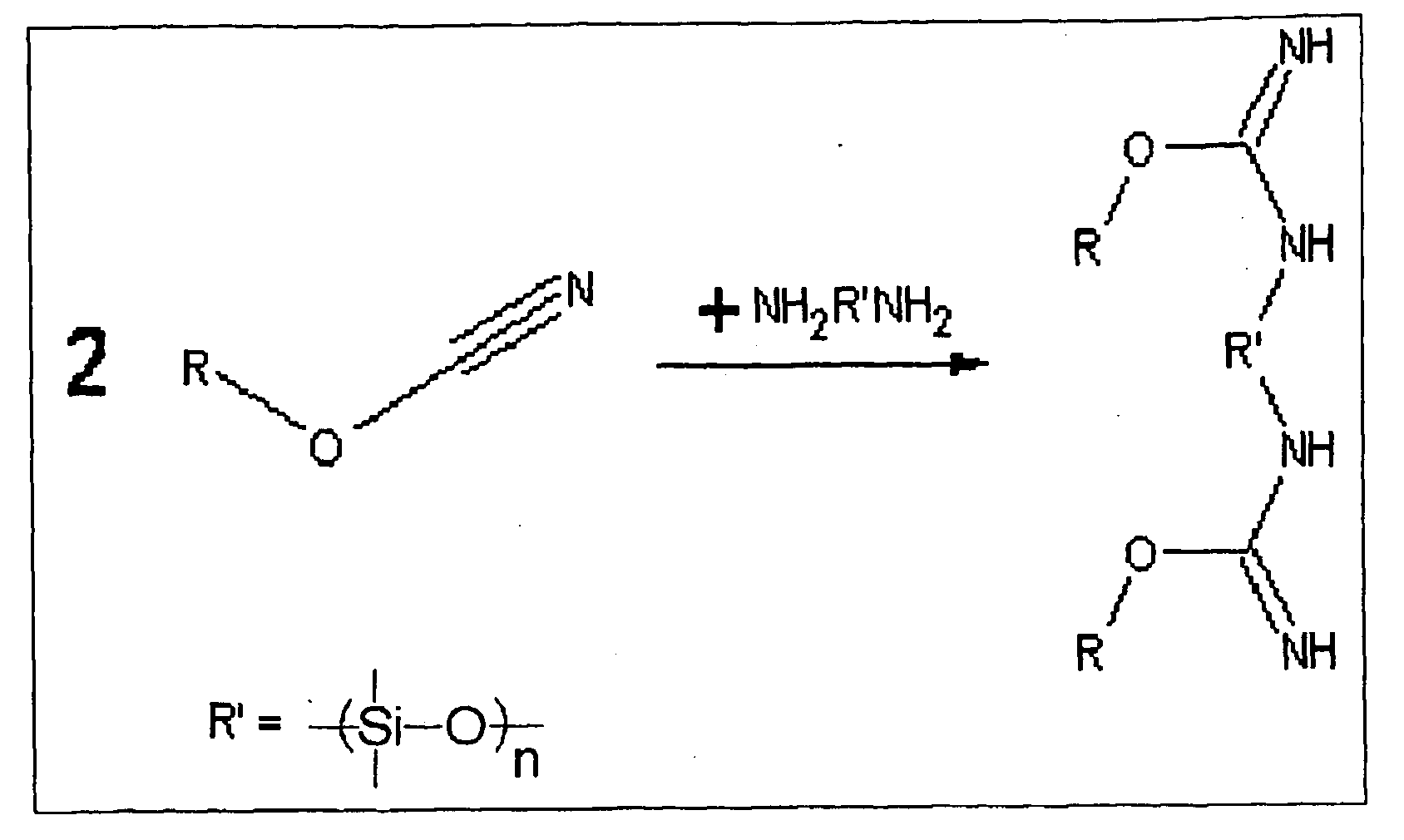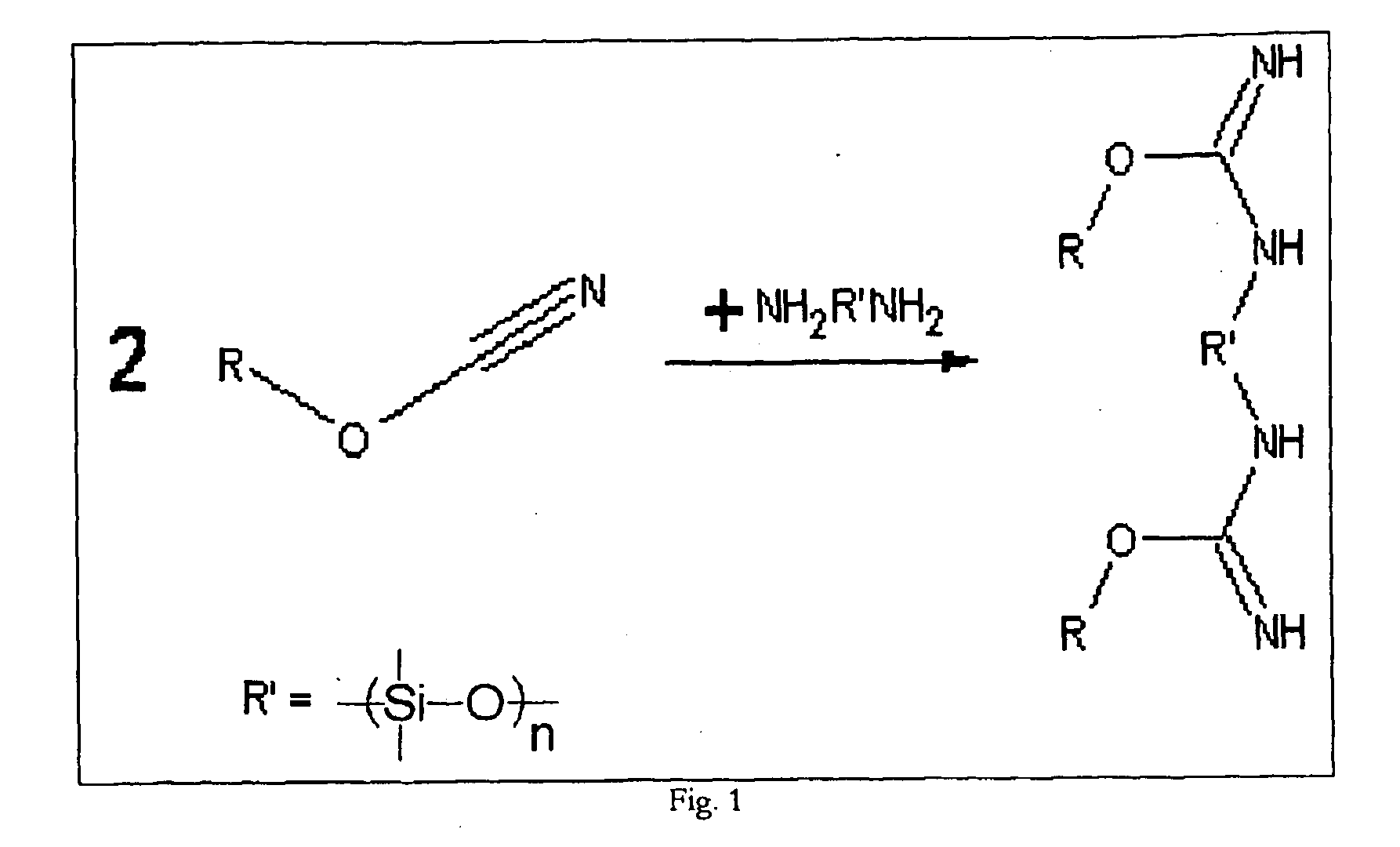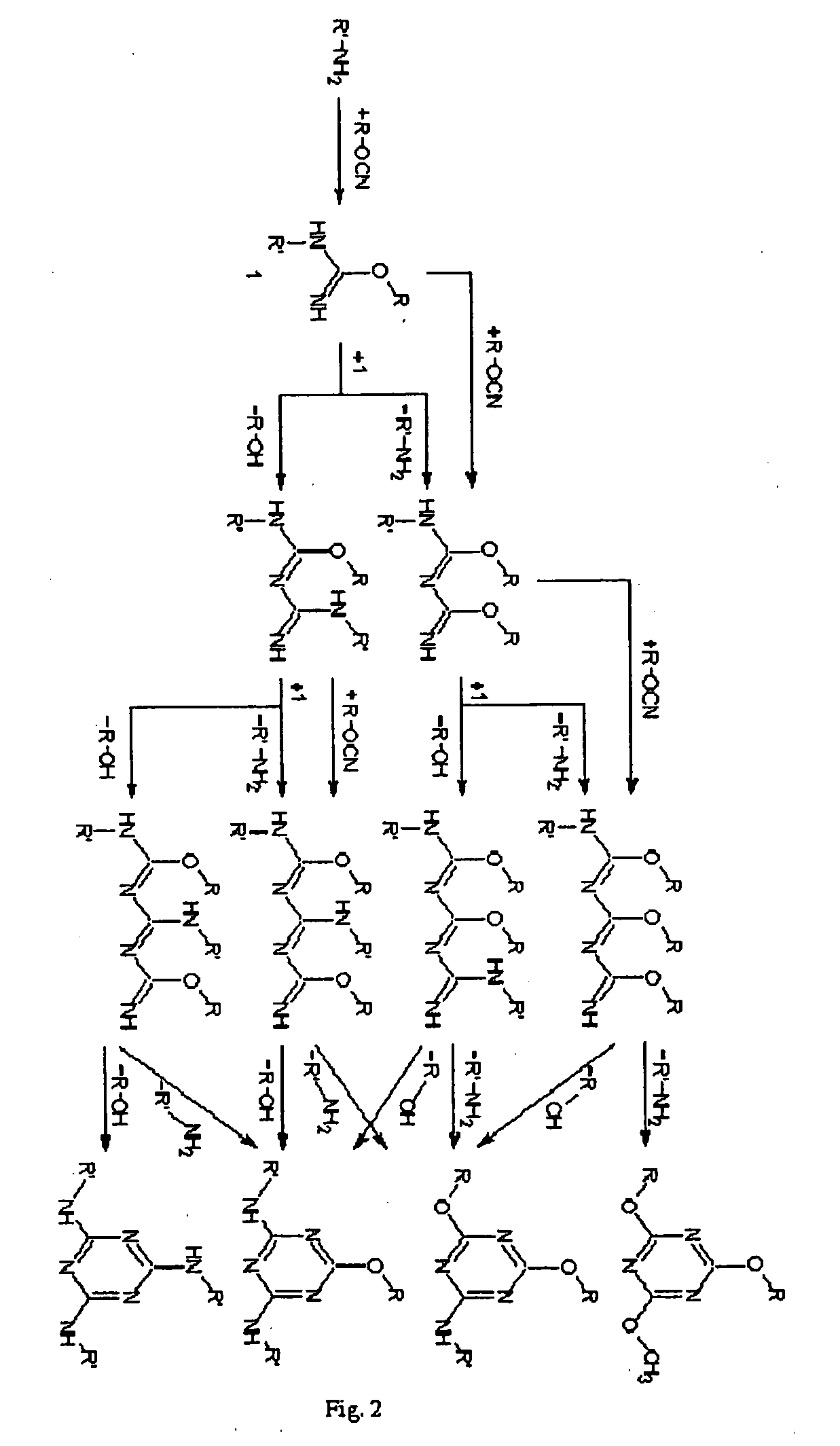Shape memory cyanate ester copolymers
a memory cyanate and ester technology, applied in the field of shape memory polymers, can solve the problems of inability to efficiently make use of the rigid phase of the polymer, material not being widely used, and inability to activate the material, etc., and achieve the effect of full structural rigidity, fast and repetitive hardening and softening
- Summary
- Abstract
- Description
- Claims
- Application Information
AI Technical Summary
Benefits of technology
Problems solved by technology
Method used
Image
Examples
example 1
[0043]A polymeric reaction mixture was formulated by first mixing thoroughly 4-cumylphenyl cyanate ester (7.5% by weight of final mixture) with amine terminated polydimethylsiloxane (6.3% by weight of final mixture) to yield a pale yellow opaque solution after sufficient stirring, and then adding 4,4′-ethylidinediphenyl dicyanate (86.2% by weight of final mixture) and again mixing thoroughly to yield a clear, yellow liquid.
[0044]To aid in mixing, the solution is subjected to low heat on a hot plate while stirring. To prepare the shape memory polymer, a mold was fabricated consisting of a 3″ by 3″ glass plate with a Viton ring encompassing the mold area. The reaction mixture formulated above was poured into the area encircled by the Viton. The mold was sealed by placing a 3″ by 3″ glass plate on top of the Viton ring. The two sheets of glass were held together by clamps around the edges. The Viton spacer also acts as a sealant in the mold. The sample was heated at atmospheric pressur...
example 2
[0046]A polymeric reaction mixture was formulated by mixing 4,4′-ethylidinediphenyl dicyanate (44.2%), 4-cumylphenol cyanate ester (40.7%) and hydroxyl terminated poly(butadiene) (15.1%) in random order to yield a pale yellow opaque solution. To aid in mixing, the resulting solution was heated at 85° C. for 4 hours with intermittent mixing to yield a clear yellow solution. To prepare the shape memory polymer a mold was fabricated consisting of a 3″ by 3″ glass plate with a Viton ring encompassing the mold area. The reaction mixture formulated above was poured into the area encircled by the Viton. The mold was sealed by placing a 3″ by 3″ glass plate on top of the Viton ring. The two sheets of glass were held together by clamps around the edges. The Viton spacer also acts as a sealant in the mold. The sample was heated at atmospheric pressure in an oven at 165° C. for 12 hours followed by a period at 220° C. for 5 hours. After the sample was cured for the specified period of time, it...
PUM
| Property | Measurement | Unit |
|---|---|---|
| temperature | aaaaa | aaaaa |
| temperature | aaaaa | aaaaa |
| operating temperatures | aaaaa | aaaaa |
Abstract
Description
Claims
Application Information
 Login to View More
Login to View More - R&D
- Intellectual Property
- Life Sciences
- Materials
- Tech Scout
- Unparalleled Data Quality
- Higher Quality Content
- 60% Fewer Hallucinations
Browse by: Latest US Patents, China's latest patents, Technical Efficacy Thesaurus, Application Domain, Technology Topic, Popular Technical Reports.
© 2025 PatSnap. All rights reserved.Legal|Privacy policy|Modern Slavery Act Transparency Statement|Sitemap|About US| Contact US: help@patsnap.com



